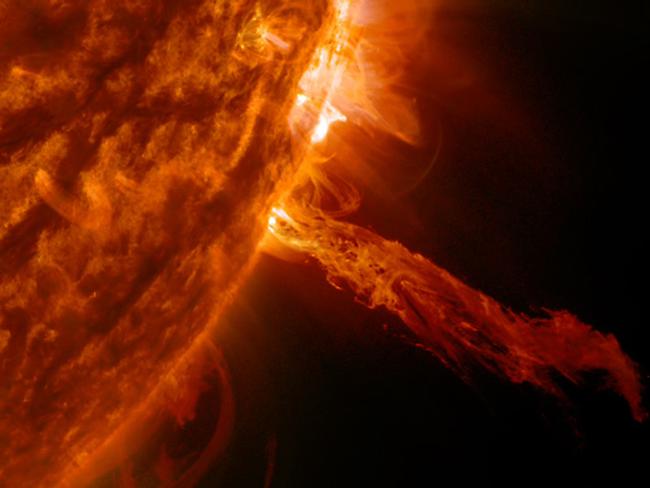The death of star V838 Monocretis has been captured by the Hubble Space Telescope
GLOWING, glowing, gone: The stunning death of star V838 Monocretis is caught by NASA on Hubble Space Telescope.
NASA has released stunning time lapse footage of a star erupting in space, starting with a flash then spreading stellar dust clouds across the cosmos.
What we see as a 49-second clip on our little screens is four years of explosion captured by the Hubble Space Telescope.
Incredibly, the star is around 20,000 light years away from Earth and is on a scale two thirds larger than our solar system, at more than 13 light years wide, according to DIY Photography.
It is not known why the star, V838 Monocerotis, exploded, and NASA explains it is different to more typical “nova” stellar outbursts.

The agency describes a nova as “a normal star that dumps hydrogen onto a compact white-dwarf companion star. The hydrogen piles up until it spontaneously explodes by nuclear fusion — like a titanic hydrogen bomb. This exposes a searing stellar core, which has a temperature of hundreds of thousands of degrees Fahrenheit.”
The doomed V838 Monocerotis, however, ballooned in size while its surface temperature plunged — incredibly, to not much hotter than a light bulb.
Astronomers speculate it the event “may represent a transitory stage in a star’s evolution that is rarely seen” — which makes us all the more fortunate to have Hubble.
Speaking of NASA, while reading about this stellar explosion we discovered the space agency’s “image of the day” section — and felt it was worth sharing.

It’s a fantastic shot of a solar plasma spurt.
While not as unusual as the star, we thought you might like it. Enjoy:



